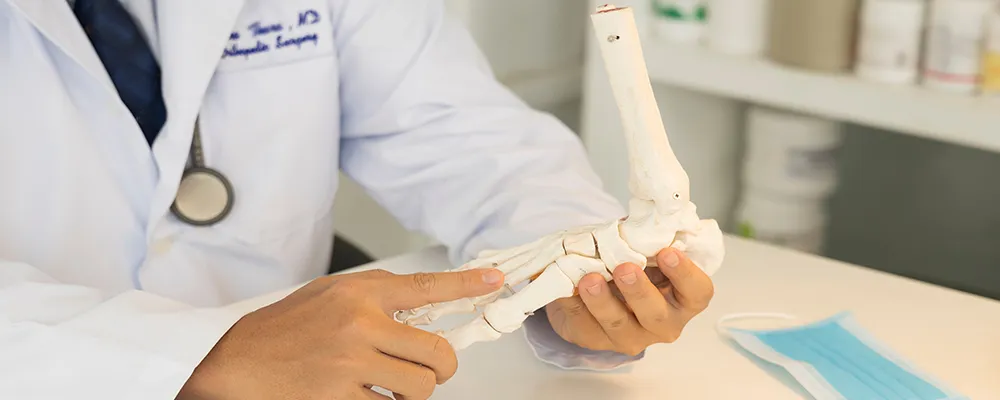In comparison to western countries, bunion surgery in India is relatively inexpensive. Without spending a lot of money, you can get the best tailored medical treatments. The doctors have received international training and are supported by a knowledgeable and devoted team. The technology, machinery, and equipment used are the most up to date in the industry. Bunion surgery in India costs between $ 2700 to 4000 USD, which is less than in the USA, UK, Singapore, Germany, and many other European countries. International patients can save a lot of money by visiting Indian hospitals, which provide affordable health packages. The cost of bunion surgery in India varies based on several factors, including the hospital chosen and its location, the doctor's experience, and whether the patient has concomitant issues.
The cost of bunion surgery is determined by several factors, including:
A bunion is a painful condition caused by the expansion or enlargement of the big toe joint. The first long metatarsal bone deviates in the opposite direction from the others. This jutting bone pushes on the shoe, causing discomfort.
It comes in the following varieties:
Hammertoes are a condition in which the toe is bent in a claw-like shape due to muscular imbalance.
Some bunions develop over time, while others develop quickly. Some bunions are painful, while others are not, and the size of the bunions has no bearing on this. The reasons are as follows:
Bunion surgery is recommended for people who have chronic big toe swelling or deformity. If you have severe bunion pain while walking or wearing flat and comfortable footwear, bunion surgery may be the best solution for you.
The doctor will undertake a physical examination after gathering a full history of the patient's symptoms. The doctor will inspect the foot during a physical examination to evaluate the size and shape of the bunion. You will also be urged to undergo various tests in order to examine the patient's overall health prior to surgery.
In order to have an uneventful operation, you must also follow the procedures listed below:
Bunion treatments come in three varieties:
The following are the most prevalent bunion surgery procedures:
The doctor will numb the area below the ankle with local anaesthetic. The surgeon will make an incision around the toe joint and fix the damaged joint once the anaesthetic has worn off. The doctor will perform any of the bunion removal surgeries listed above, depending on the symptoms, shape, and size of the bunion. The surgeon will close the cut and bandage the foot once the joints are adjusted.
The surgical nurse will check your vitals, such as blood pressure and heart rate, in the recovery room. For a few weeks, pain and edoema are frequent, but they can be managed by taking the prescribed medications. You will need to wear a surgical boot or cast for the first three to six weeks to maintain your foot in the proper position as it heals.
To increase the strength and motion of the foot, the doctor will prescribe certain exercises or modest physical activity. The nurse will give you specific wound care instructions before you leave.
If you have any of the following symptoms, you should seek medical advice:
The success rate of bunion surgery is often high, up to 85 percent in some cases. The number of people who do not benefit from this procedure is extremely tiny. The success of an individual is primarily determined by his or her lifestyle. A healthy lifestyle should be adopted. Get a complete physical examination (BP, lungs, heart etc.). If you are taking any medications, inform your doctor before surgery so that he or she can make an informed decision.
A bone will normally take at least 8 to 12 weeks to mend completely after surgery. You must follow the following steps during this time:
There are a variety of hypotheses about how bunions form, and it can be influenced by a variety of variables. According to specialists, when weight is not evenly distributed on the joints of the foot for an extended period, the joints become unstable and create a hard lump. Hereditary foot deformity, arthritis, and any previous injury can all cause it. It can also be caused by wearing high-heeled, narrow, and tight shoes.
Bunions cause a bulging bulge on the big toe, pain, redness, swelling, burning feeling, and numbness.
During the procedure, the doctor administers anaesthetic to the patient. After that, the doctor will make small incisions near the bunion, cut the deformed bone, and realign it with the foot.
When doing this procedure, doctors typically use local anaesthetic with intravenous sedation. The foot will be numbed, and you will be given a couple drugs to help you relax during the procedure.
One week following surgery, the patient will have some discomfort. To lessen swelling and pain, the patient must follow the surgeon's directions. The discomfort that follows bunion surgery varies from person to person.
Regular medical visits and x-rays will help you determine whether your bunion is progressing quickly or not. Some therapies, including as changing shoes, pain medications, injections, cushioning, and so on, can help many patients avoid surgery. However, if you have taken all measures and are still experiencing pain and suffering, surgery is the best alternative.
It will take several weeks to recover. You should avoid putting too much weight on your treated foot for the first 6 weeks, as well as driving, bathing, and working in a field job. Please also consult your doctor about this.
After 6 weeks, you can resume wearing your regular shoes. It also depends on the severity of the bunion being treated. If you continue to wear the same shoes, there is a potential that the bunion will recur. Choose comfortable shoes that support your curves and give your toes enough room. You can get this information from your doctor. He will assist you with this matter.

